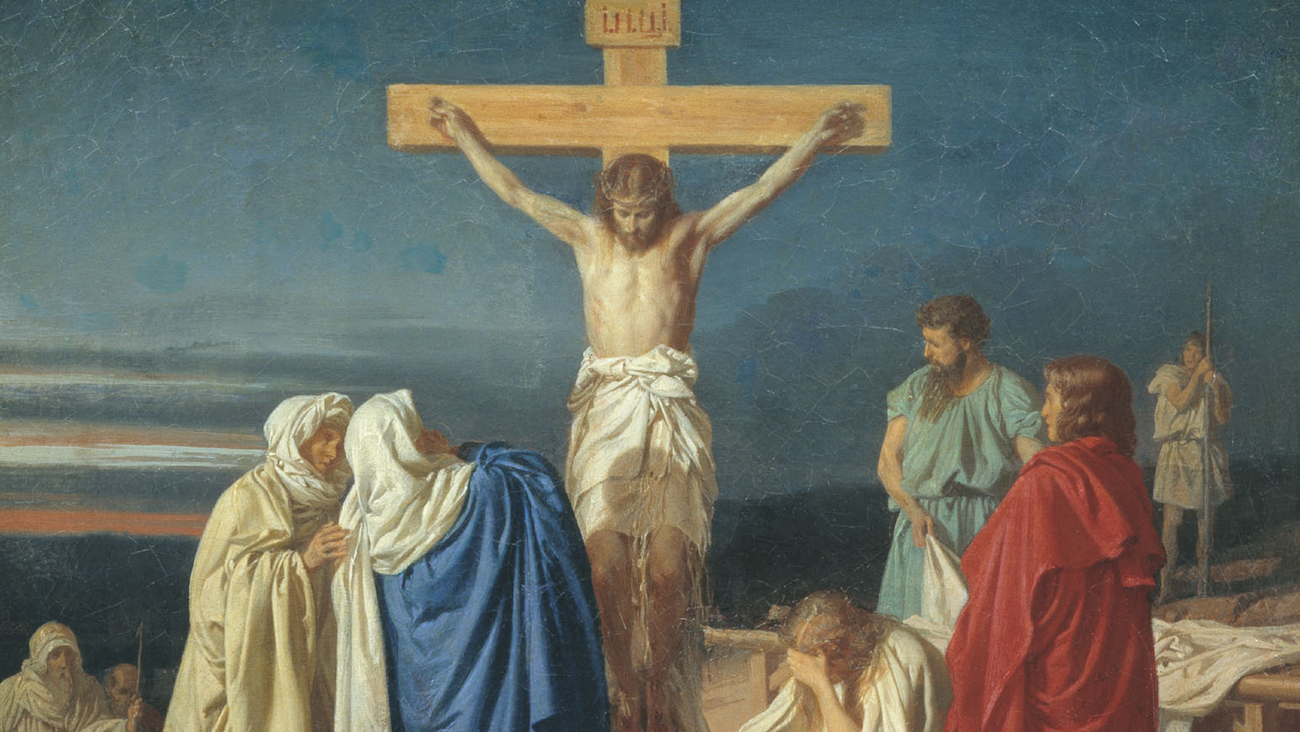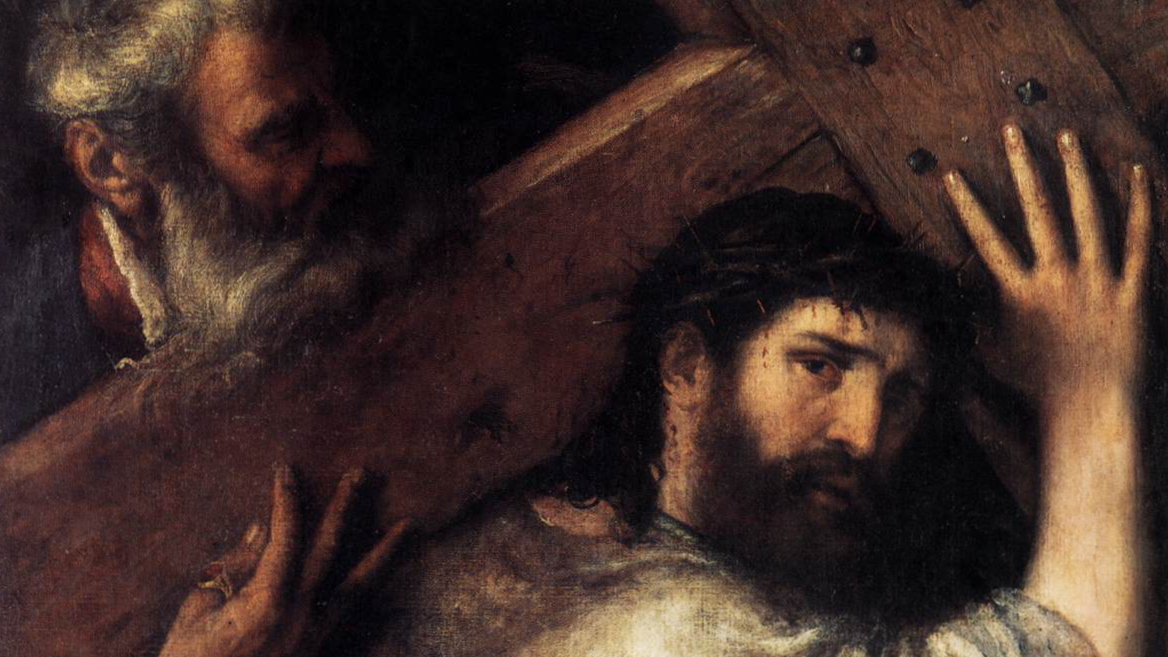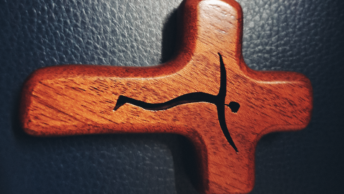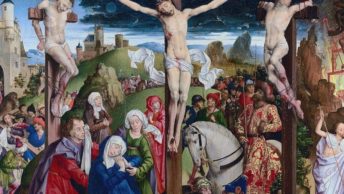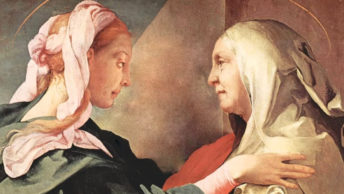On the Feast of the Exaltation of the Holy Cross, we pause and reflect. For on the surface, it sounds a little bit like an ironic name for a feast. The cross was an instrument of torture, of public humiliation and shame, and of death. These are concepts we don’t usually associate with being victorious, with being triumphant. And yet, as Christians, we know that Christ used the cross to win our salvation. He died on the cross to redeem our sins, and the symbol of the cross has taken on new meaning for us. It has become a symbol of God’s love for us.
I’m sure most of you have watched some sporting event on television, such as a football game, and as the cameras pan through the spectators, you might have seen someone in the end zone holding a sign that read: “John 3:16” It, of course, refers to a verse in the Bible that many of us have read and heard many times:
“For God so loved the world that he gave his only Son, so that everyone who believes in him might not perish but might have eternal life.”
To accomplish this act of salvation, God first had to become man. Jesus assumed our human nature so that He could suffer and die for us. Because, as one of the early Church Fathers said: “That which is not assumed is not saved.” So the Son of God, the Eternal Word of God, came down from heaven to become one of us. St. Paul tells us that: “[H]e emptied himself, taking the form of a slave, coming in human likeness; and found human in appearance, he humbled himself, becoming obedient to death, even death on a cross.”
Jesus was obedient to His Father. In the Garden, before His crucifixion, He understood the suffering He was about to endure; He sweat blood in anticipation. The devil tried to tempt Him; to talk Him out of fulfilling the will of His Father. But Jesus resisted. He followed God’s ways and not man’s ways. In accepting the cross Jesus said yes to God and no to Satan. He defeated Satan once and for all. He won back the freedom that was lost in another Garden by Adam and Eve.
And so now we look at the cross as a symbol of healing, not as a symbol of death, because Christ conquered death. The healing power of Christ on the cross was anticipated in the Old Testament. In the desert, when the Israelites were bitten by seraph serpents, God instructed Moses: “Make a seraph and mount it on a pole, and if any who have been bitten look at it, they will live.” And Jesus instructed Nicodemus: “And just as Moses lifted up the serpent in the desert, so must the Son of Man be lifted up, so that everyone who believes in him may have eternal life.”
Jesus was lifted up on the cross so that we can have eternal life. And the crucifix is not only the cross, but also contains the image of the Body of Christ, His corpus, upon that cross. We are fortunate when we have a beautiful crucifix to look upon. On those occasions, we do not adore it. It cannot heal us. But it reminds us of the One who can. It reminds us of Christ’s suffering. But more importantly, it reminds us of His love and His healing power. It is a symbol of the victory that He won for us; that we could not win for ourselves. He won that victory by saying yes to God and no to Satan.
Jesus calls us to be victorious as well. He calls us to pick up our crosses each day; to say yes to God and no to Satan. We must be willing to deny the things of this earth so that we can be free to accept the gift that Jesus so lovingly won for us on the cross. Remember, we are truly triumphant when we choose God’s ways and not those of man.

